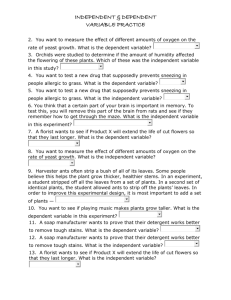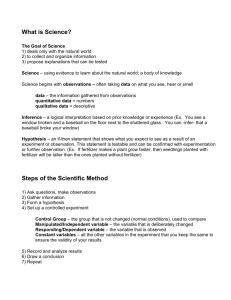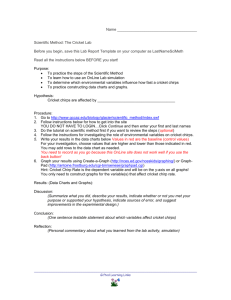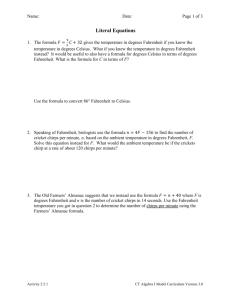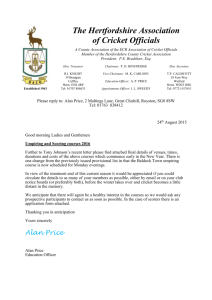Preparatory exercises
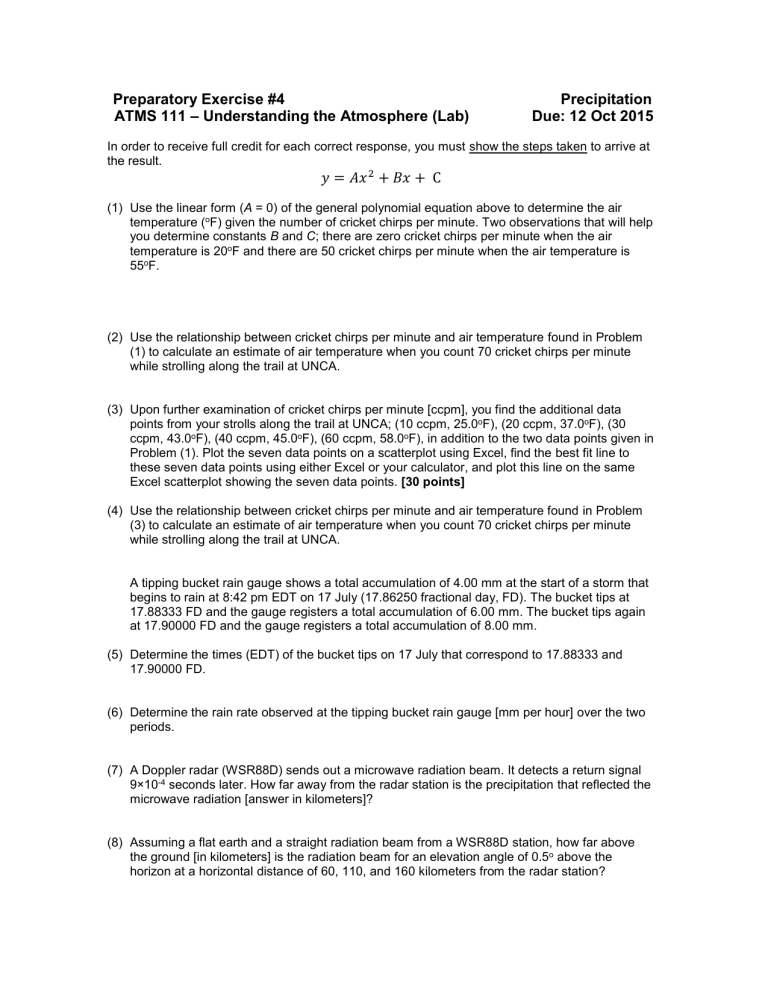
Preparatory Exercise #4 Precipitation
ATMS 111 – Understanding the Atmosphere (Lab) Due: 12 Oct 2015
In order to receive full credit for each correct response, you must show the steps taken to arrive at the result.
𝑦 = 𝐴𝑥
2
+ 𝐵𝑥 + C
(1) Use the linear form ( A = 0) of the general polynomial equation above to determine the air temperature ( o F) given the number of cricket chirps per minute. Two observations that will help you determine constants B and C ; there are zero cricket chirps per minute when the air temperature is 20 o F and there are 50 cricket chirps per minute when the air temperature is
55 o F.
(2) Use the relationship between cricket chirps per minute and air temperature found in Problem
(1) to calculate an estimate of air temperature when you count 70 cricket chirps per minute while strolling along the trail at UNCA.
(3) Upon further examination of cricket chirps per minute [ccpm], you find the additional data points from your strolls along the trail at UNCA; (10 ccpm, 25.0
o F), (20 ccpm, 37.0
o F), (30 ccpm, 43.0
o F), (40 ccpm, 45.0
o F), (60 ccpm, 58.0
o F), in addition to the two data points given in
Problem (1). Plot the seven data points on a scatterplot using Excel, find the best fit line to these seven data points using either Excel or your calculator, and plot this line on the same
Excel scatterplot showing the seven data points. [30 points]
(4) Use the relationship between cricket chirps per minute and air temperature found in Problem
(3) to calculate an estimate of air temperature when you count 70 cricket chirps per minute while strolling along the trail at UNCA.
A tipping bucket rain gauge shows a total accumulation of 4.00 mm at the start of a storm that begins to rain at 8:42 pm EDT on 17 July (17.86250 fractional day, FD). The bucket tips at
17.88333 FD and the gauge registers a total accumulation of 6.00 mm. The bucket tips again at 17.90000 FD and the gauge registers a total accumulation of 8.00 mm.
(5) Determine the times (EDT) of the bucket tips on 17 July that correspond to 17.88333 and
17.90000 FD.
(6) Determine the rain rate observed at the tipping bucket rain gauge [mm per hour] over the two periods.
(7) A Doppler radar (WSR88D) sends out a microwave radiation beam. It detects a return signal
9 ×10 -4 seconds later. How far away from the radar station is the precipitation that reflected the microwave radiation [answer in kilometers]?
(8) Assuming a flat earth and a straight radiation beam from a WSR88D station, how far above the ground [in kilometers] is the radiation beam for an elevation angle of 0.5
o above the horizon at a horizontal distance of 60, 110, and 160 kilometers from the radar station?
